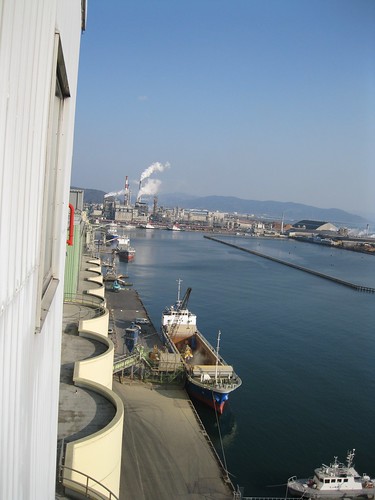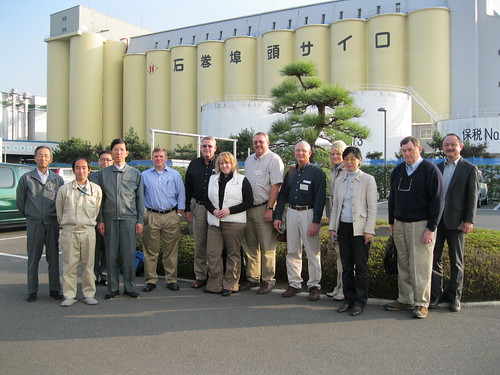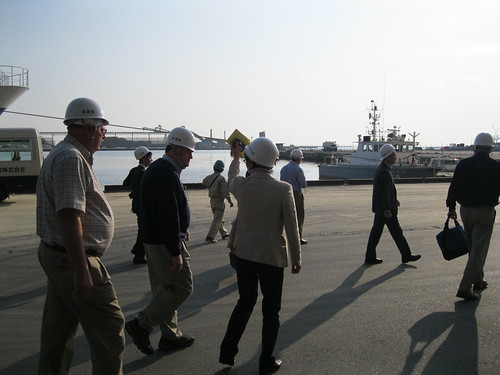On Wednesday, the delegation traveled on a bullet train north to Sendai – about a 250 mile trip. We then took a one-hour bus ride to Ishinomaki City – a lot of travel, but well worth it for the awesome experience!
We visited with staff and operators of the Ishinomaki Futo Silo Company and Kitanihon Kumiai Feed Company. The silo portion of the business is on the port where grain is stored after being unloaded from the large carrier vessels. The largest vessel they can pull into this port is a Handymax (around 40 MT in which it takes about 50 hours to unload).
This facility has been expanded five times to be able to store more imported grain (98% of the corn they import is from the U.S.). They are also currently constructing four new silos specifically for dried distillers grains (DDGS). These new silos will have a special “scraper” inside to help prevent caking.
The feed company makes compound feed rations for beef and dairy cattle, as well as poultry and swine. The biosecurity measures they take in the feed mill to keep everything clean and separate was impressive! New technology is regularly being implemented in all facets of agriculture in Japan. Both segment of the company were glad to hear the report on 2010’s corn crop being of excellent quality and reported back to us that they have been receiving 2010’s crop since October.
The following day, the delegation was able to meet with the Feed Supply & Demand Planning Office of the Ministry of Agriculture, Forestry and Fisheries (MAFF) of Japan. Hearing the perspective from these government officials was important as key policy is coming in the near future that could affect imports of U.S. corn to Japan.
MAFF was also glad to hear the good report of the 2010 corn crop, but had several questions on the future of meeting demand in a growing world with increased usage of corn for ethanol and China’s role in buying more U.S. corn. Kenny McNamar, farmer from Gorin, Missouri and president for the Missouri Corn Growers Association, was able to assure them that U.S. corn farmers are going to be able to meet demands of all markets.
“Not only are we exporting more corn, we have tremendous demand from our domestic livestock industry to grow more corn,” said McNamar. “Near my farm in Missouri, I have seen more acres go into corn that have not been growing corn in many years.”
After a lunch meeting with Zen-noh, the primary agricultural cooperative in Japan, the delegation packed up and traveled to Taipei, Taiwan. Updates from Taiwan to come!
The group especially wants to thank Tetsuo “Tommy” Hamamoto and Hiroko Sakashita, director and associate director of USGC Japan, respectively, for their time and contacts in setting up the meetings with these organizations. Thanks to checkoff dollars from Nebraska corn producers, we literally have boots on the ground all around the world 24/7 in directors like Tommy and Hiroko. They answer technical feeding questions, industrial use questions, quality aspects, biotech, and transportation, along with the questions on trade policy. But, it is their personal contacts with our customers that make them so valuable.




No comments:
Post a Comment